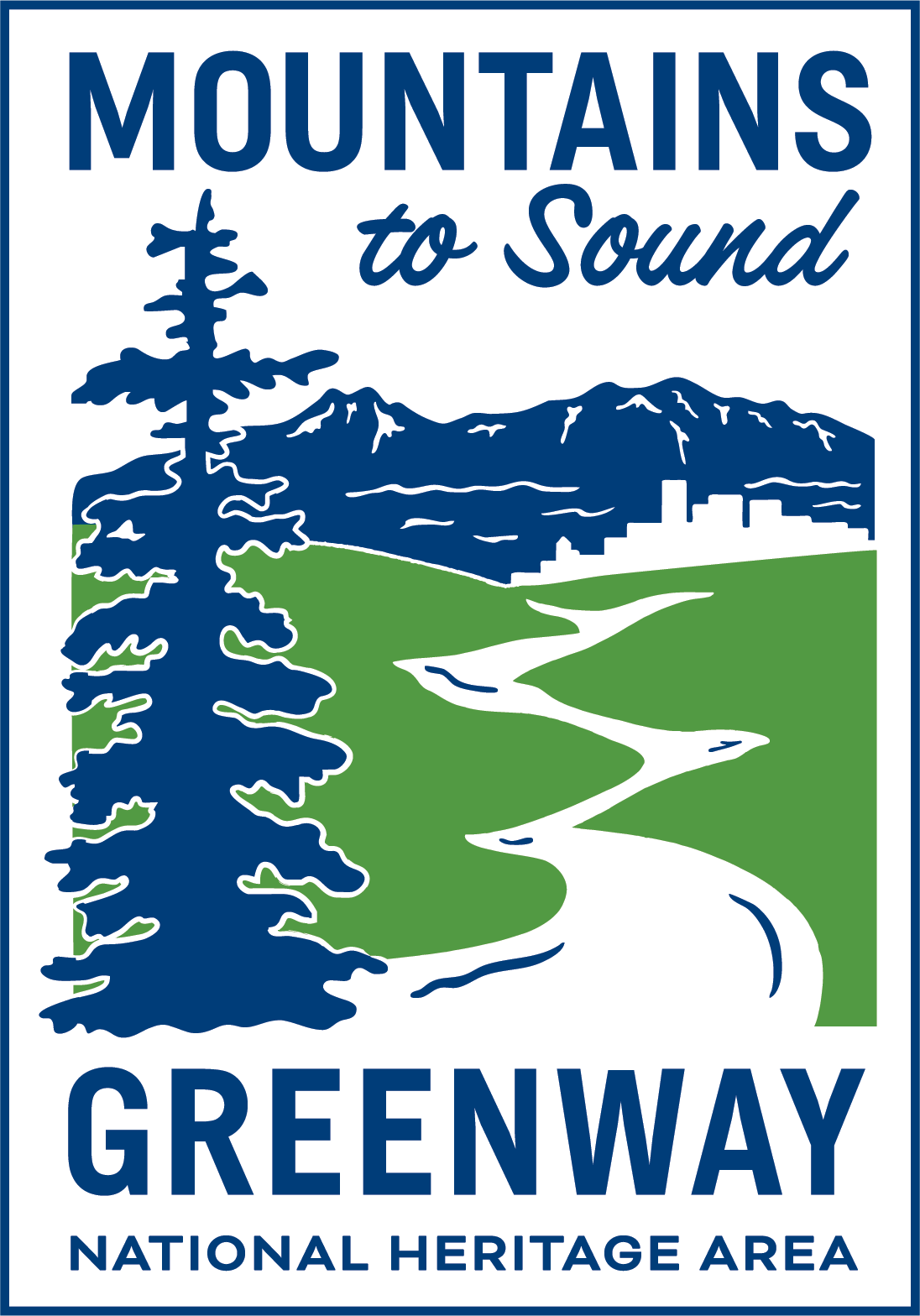The Mountains to Sound Greenway National Heritage Area is an incredible national success story that highlights what individuals, organizations, and agencies can accomplish when they work together toward common goals. For nearly 30 years, a diverse coalition has worked to conserve a shared heritage of accessible recreation, productive farms and forests, healthy ecosystems, dynamic communities, and distinctive history across this landscape. Thanks to the commitment and dedication of the Greenway coalition, a unique system of natural and cultural assets along the I-90 corridor has been secured for future generations.
The Heritage Study
2009-2012
Beginning in 1990, the vision took shape of a Mountains to Sound Greenway focused on conserving natural areas through public land acquisitions and exchanges in order to protect a connected green corridor surrounding Interstate 90. By 2008, many of the key purchases had been completed and attention began to shift toward the long-term stewardship of these lands.
After studying a wide variety of options that have worked in other locations, the Greenway Trust determined that the cooperative framework of a “National Heritage Area” would provide the perfect means to accomplish long-term stewardship goals.
The first step in pursuing that designation was to complete a feasibility study to determine if the region meets the eligibility criteria put forth by the National Park Service. The Greenway Trust began this study in 2009. The feasibility study was a stakeholder-driven process based on over 140 meetings with more than 1,000 individuals. Participants represented a broad cross-section of stakeholders in the region, from federal, state, and local governments, to non-profit organizations, private businesses, and community groups. Resoundingly, there was strong support for an inclusive and collaborative approach to sustaining the Greenway into the future and for formal recognition of the Greenway as a National Heritage Area.
113th U.S. Congress
2013 – 2014
Mountains to Sound Greenway National Heritage Area legislation was introduced for the first time in Congress by Senators Maria Cantwell and Patty Murray and Congressmen Dave Reichert and Adam Smith. A strong showing in our first congressional session saw us in the mix in the final days, but at the end we just missed being included in the final lands package approved by Congress.
114th U.S. Congress
2015-2016
In May 2015, over 3,000 local hikers, bikers, climbers, and kayakers voiced their support for Greenway National Heritage Area designation to Congress. Shortly after, legislation was introduced in the Senate by Senators Maria Cantwell and Patty Murray, and in the House by Congressmen Dave Reichert and Adam Smith. This time around, our legislation was included on the Energy Bill, which emerged as the most promising vehicle for passing a variety of land conservation efforts, including Greenway NHA designation and permanent reauthorization of the Land and Water Conservation Fund. However, Congress could not find agreement on the Energy Bill and adjourned without taking a vote.
115th U.S. Congress
2017-2018
March 2017: Legislation was re-introduced in March of 2017. Senate Bill 713 was introduced by Senator Maria Cantwell, with co-sponsor Senator Patty Murray, and H.R. 1791 was introduced by Congressman Dave Reichert, with co-sponsors Representatives Adam Smith, Suzan DelBene, and Pramila Jayapal.
June 2018: Legislation HR 1791 passed in the US House of Representatives. To become law, the same bill would need to be passed by the Senate. The legislation was received in the Senate and referred to the Committee on Energy and Natural Resources.
December 2018: The Senate added the Mountains to Sound Greenway National Heritage Area legislation in the major public-lands bill that also included the bipartisan legislation to permanently reauthorize the Land and Water Conservation Fund. In the final weeks of the 115th United States Congress, the Mountains to Sound Greenway came within inches of designation as a National Heritage Area. Despite passionate support from both sides of the aisle, a procedural objection blocked the vote.
116th U.S. Congress
2019
At the start of the 116th Congress, we saw the unexpected revival of the major public-lands bill. This is the largest bipartisan legislative package of public lands bills assembled by Congress in over a decade which includes permanent reauthorization of the Land and Water Conservation Fund (LWCF), as well as legislation to designate the Mountains to Sound Greenway as a National Heritage Area. With enthusiastic bipartisan support for permanent authorization of the LWCF and the more than one hundred bills that would contribute toward natural resources in communities across the country, lawmakers were committed to see this legislation pass both chambers.
February 12: The major public-lands bill (S. 47 – The Natural Resources Management Act) passed in the U.S. Senate with a vote of 92 – 8.
February 26: The U.S. House of Representatives passed the major public-lands bill by a margin of 363-62.
March 12: President Donald Trump signed legislation for the major public-lands bill, renamed John D. Dingell, Jr. Conservation, Management and Recreation Act, designating the Mountains to Sound Greenway a National Heritage Area.

